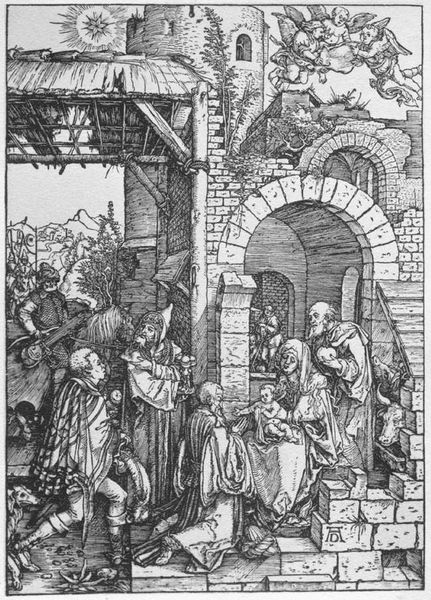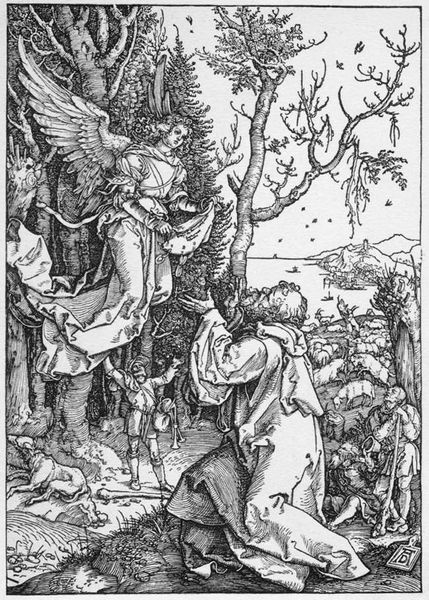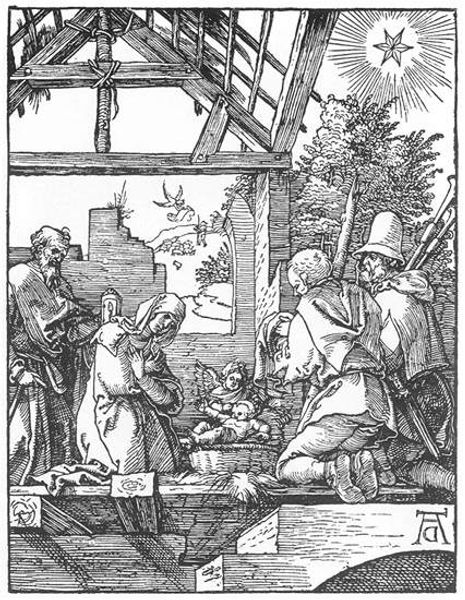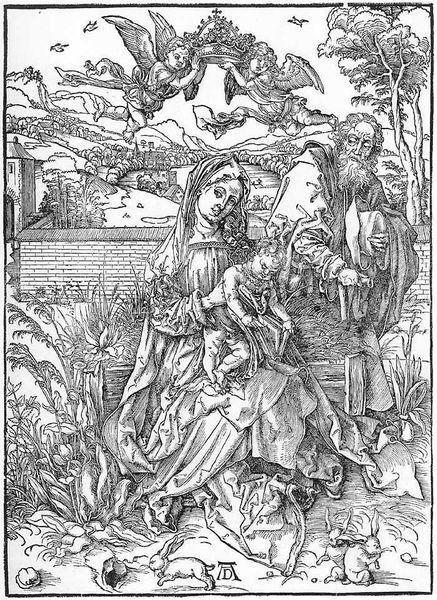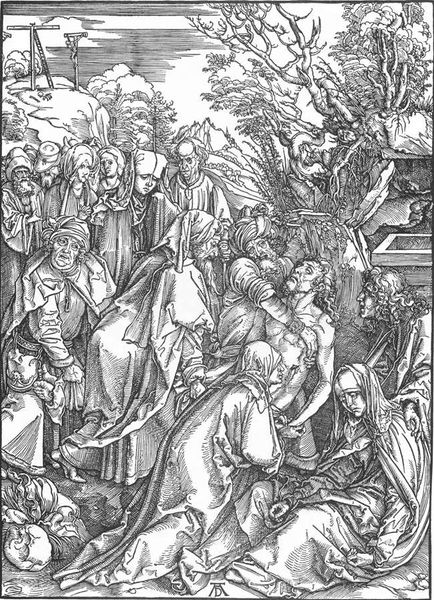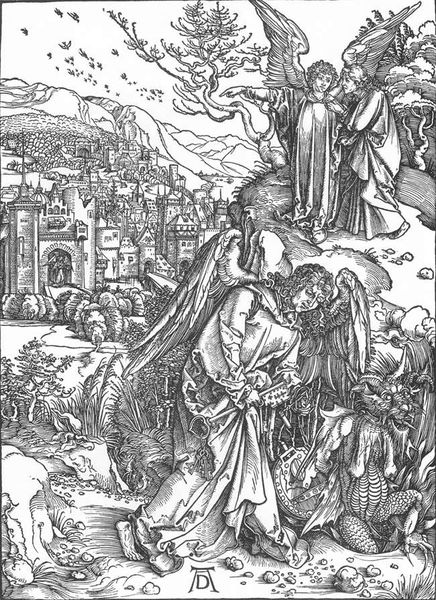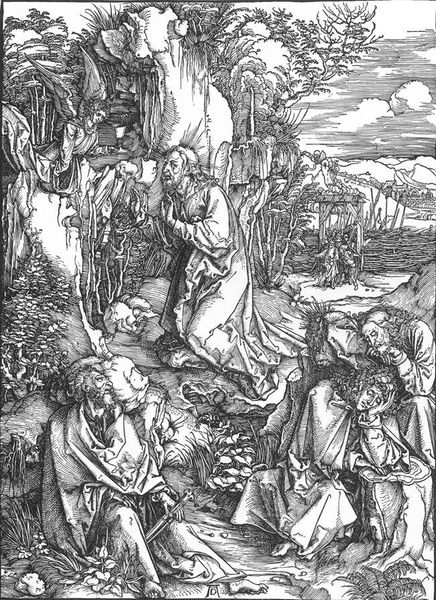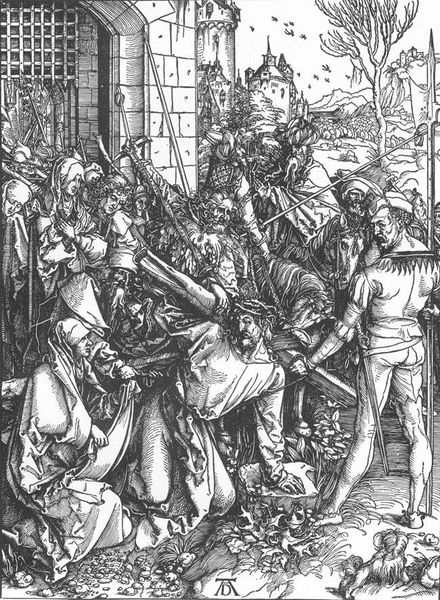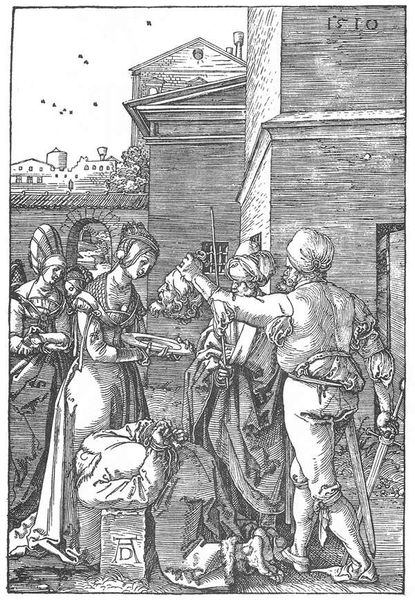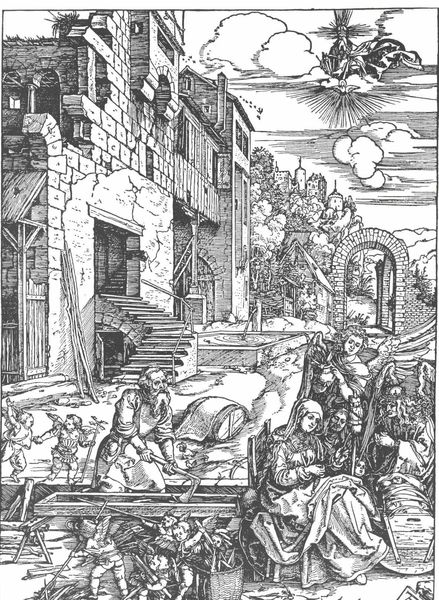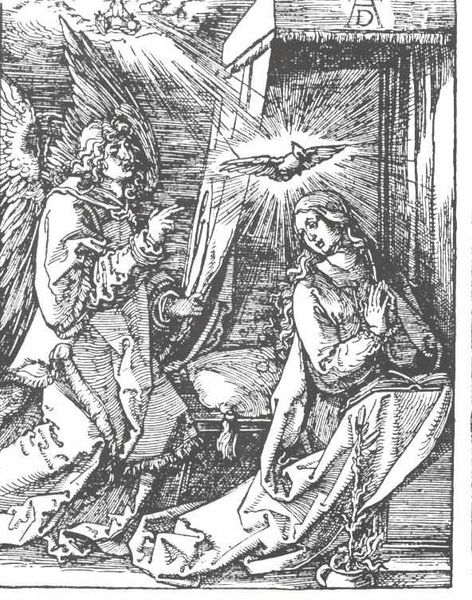
drawing, print, ink, engraving
#
drawing
# print
#
pen illustration
#
figuration
#
ink line art
#
ink
#
christianity
#
line
#
history-painting
#
northern-renaissance
#
engraving
#
christ
Copyright: Public domain
Curator: The artwork before us is Albrecht Dürer's "The Adoration of the Shepherds," created around 1505. It's an engraving, residing now at the Albertina in Vienna. My immediate impression is one of intense, almost chaotic energy rendered in meticulous detail. What strikes you? Editor: Chaos is a great word! My first thought was about ruins. A roof caved in, broken brick. And from that brokenness bursts forth, ironically, this new life and, well, angels! It’s beautiful but also unsettling. What’s the cultural echo here? Curator: Consider the time. Early 16th century. Dürer, deeply influenced by the Italian Renaissance, brings classical precision to a distinctly Northern European aesthetic. Note the collapsing structure – a potent symbol. Is it the decrepitude of the Old Covenant giving way to the new? Editor: Absolutely, the destruction as rebirth idea resonates, and the architectural setting provides a symbolic framework of transition. This could symbolize both the literal degradation and reconstruction but in terms of faith. The broken walls could also speak of vulnerability, an unguardedness that invites the divine. Curator: Precisely! Observe, too, Dürer’s characteristic use of line. The dense, cross-hatched shading gives tremendous volume and texture, creating a rich visual tapestry that invites the viewer to linger over the scene. The detail on Mary’s robes, for example! Or, the faces of the shepherds. Each one unique, etched with character. Editor: Yeah, the sheer density of line creates this vibrating energy. You can almost hear the rustling of angel wings, the breath of the ox... It's like the whole scene is alive and trembling with significance. The figures convey such palpable wonder. Curator: It’s an amazing feat to capture wonder like that. Dürer masterfully employs biblical typology. Every detail, from the humble animals to the celestial host, plays its part in conveying the momentous nature of the event. Editor: It really does become something transformative and complex in Dürer's rendering. Makes you wonder if he himself had such intense emotionality in confronting faith. Thanks for highlighting this image, It’s stayed with me. Curator: A pleasure. Its iconic representation has shifted the cultural impact, as its symbols have persisted, reinterpreted, and re-integrated across countless epochs since.
Comments
No comments
Be the first to comment and join the conversation on the ultimate creative platform.
